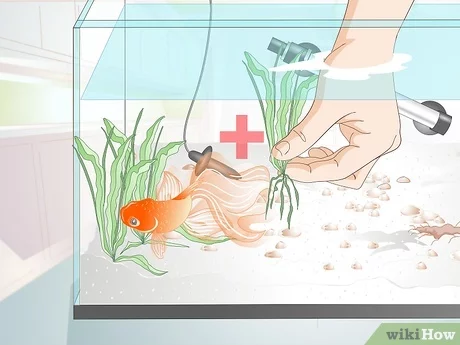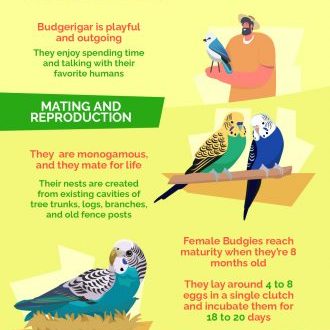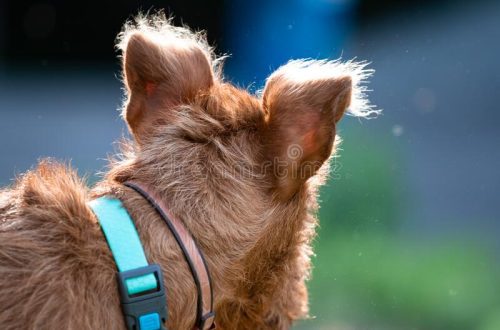
Care and maintenance of goldfish, their breeding and spawning
Many novice aquarists believe that goldfish do not require much care and therefore they are most often purchased first in their aquarium. Indeed, this representative of the carp fish family looks very impressive in the aquarium. However, despite her beauty, she is very capricious and may not last long with beginners. Therefore, before you buy a beautiful and effective copy, or even several, you need to familiarize yourself with the features of their maintenance and care as much as possible.
Contents
Goldfish: description, size, distribution
The ancestor of the fish is pond carp. The first aquarium goldfish appeared about one hundred and fifty thousand years ago. It was brought out by Chinese breeders.
Outwardly, the fish look the same as their ancestors: single anal and caudal fins, an elongated body, straightened paired pectoral and ventral fins. Individuals may have a different color of the body and fins.
You can keep goldfish not only in aquariums, but also in ponds. pond fish grows up to thirty centimeters, in aquariums – up to fifteen. Being a breeding form, they do not live in the natural environment.
Fish can breed already in the second year of life. But in order to get good offspring, it is better to wait for them to reach the age of three or four. Goldfish can breed several times a year, and spring is a more favorable period for this.
Varieties
The most common natural color of goldfish is red-gold, with dark undertones on the back. They can also be of other colors: pale pink, fiery red, yellow, red, white, black, dark bronze, black-blue.
Comet
This goldfish is characterized by its simplicity and unpretentiousness. She herself is small in size with a long tail, larger than her body.
The standard of comet beauty is considered to be fish with a silvery body and a red, bright red or lemon yellow tail, which is four times the length of the body.
Veiltail
This is an artificially bred variety of goldfish. Its body and head are rounded, the tail is very long (four times longer than the body), forked and transparent.
This species is very sensitive to sudden changes in water temperature. When the temperature is unfavorable for them, they begin to fall sideways, swim up belly or sideways.
fantail
This fish easily confused with veiltailbecause they are very similar. The difference is that in the fantail, the body is slightly swollen from the sides, while in the veiltail, the fin is higher.
The tail of this fantail consists of three lobes that are fused together. The color gives it an unusual beauty: a red-orange body and fins, with a translucent edging along the outer edge of the fins.
Telescope
Telescope or demekin (water dragon). It has a swollen ovoid body and a vertical fin on its back. All his fins are long. Telescopes differ in the shape and length of the fins, the presence or absence of scales, and coloration.
- Chintz telescope has a multicolor color. Its body and fins are covered with small spots.
- The Chinese telescope is similar in body and fins to a fantail. He has large bulging spherical eyes.
- The black telescopes were bred by a Moscow aquarist. It is a fish with black velvet scales and ruby red eyes.
Keeping goldfish in an aquarium
No problem keeping goldfish subject to a number of conditions:
- Setting up an aquarium.
- Settling the aquarium with fish.
- Proper feeding.
- Regular maintenance of the aquarium.
- Disease prevention.
Choosing and arranging an aquarium
First of all, it should be noted that for goldfish, the aquarium must be with a capacity of at least one hundred liters.
When purchasing soil, you need to pay attention to its fraction. Goldfish are very fond of sorting out pebbles and fine soil can get stuck in their mouths. Therefore, it is recommended to buy a fraction of more than five millimeters.
Aquarium equipment:
- Heater. Although goldfish are considered cold-water, they do not feel very comfortable at temperatures around twenty degrees. And such individuals as lionheads, telescopes and ranches are more thermophilic. You can keep the temperature in the aquarium at a level of twenty-two to twenty-five degrees. Here you should choose according to the well-being of pets. It is also necessary to know that fish kept at elevated temperatures age faster.
- Internal filter. In connection with their physiology, goldfish are characterized by high mud formation. In addition, they love to dig in the ground. Therefore, for mechanical cleaning in an aquarium, a good filter is simply necessary, which will need to be washed regularly under running water.
- Compressor in an aquarium it will be useful, even if the filter, in aeration mode, does its job. Goldfish need a fairly high oxygen content in the water.
- Siphon needed for regular cleaning of the soil.
In addition to the basic equipment, plants should be planted in the aquarium. This will help fight algae, have a positive effect on the ecological situation, and simply be pleasing to the eye. Goldfish are happy to eat almost all aquarium plants, while receiving an additional source of vitamins. So that the “flowering garden” of the aquarium does not look gnawed, you can plant a certain amount of hard and large-leaved plants to the “tasty” plants, which the fish will not touch. For example, lemongrass, anibus, cryptocoryne and many others.
What to feed goldfish
The diet of goldfish may include: feed, earthworms, white bread, bloodworms, semolina and oatmeal, seafood, lettuce, minced meat, nettle, hornwort, duckweed, richcia.
Dry food It takes a few minutes to soak in aquarium water. When feeding only dry food, the digestive system can become inflamed in fish.
Do not overfeed goldfish. On the day, the weight of food should be no more than three percent of the weight of the fish. Overfeeding leads to infertility, obesity, inflammation of the gastrointestinal tract.
Fish should be fed twice a day, leaving food for no more than fifteen minutes. Excess feed is removed by a siphon.
Disease Prevention
To prevent your pets from getting sick, you need to follow some content rules:
- monitor the purity of water;
- do not overpopulate the aquarium;
- observe the feeding regimen and the correct diet;
- Avoid hostile neighbors.
Breeding and spawning
Goldfish are bred in containers ranging from twenty-five to thirty liters. The container is filled with sandy soil, water, the temperature of which should be about twenty-five degrees and small-leaved plants. To stimulate spawning, it is recommended to heat the water five to ten degrees more than the original. The spawning area should have powerful insulation and bright lighting.
Before planting fish for spawning, it is necessary to have heterosexual individuals two or three weeks to hold separately. After that, one female and two or three males are launched into the aquarium. Males start chasing the female at high speed, which contributes to the distribution of eggs throughout the aquarium (mainly on plants). The mark can last from two to five hours. One female lays from two to three thousand eggs. After spawning, the parents are immediately removed.
The incubation period in spawning lasts four days. During this time, whitened and dead eggs should be removed, which can become covered with a fungus and infect the living.
Fry emerging from eggs almost immediately begin to swim. They are developing quite quickly. Water for keeping fry should be at least twenty-four degrees. The fry are fed with ciliates, rotifers.
In a good aquarium with enough water, with proper care, goldfish will delight the owner with their beauty for a long time.





